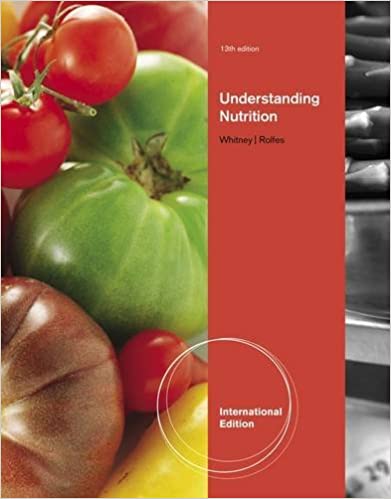Nutrition Now 7th Edition by Judith E. Brown – Test Bank
Test Bank for Unit 5 – Nutrition, Attitudes, and Behavior
True/False
1. _____ Women are advised to consume alcohol in moderate amounts during pregnancy to help reduce blood pressure and improve fetal brain development.
2. _____ Dietary changes introduced into a culture with the purpose of improving health of the population will only be successful if the change is accepted by the culture.
3. _____ Some types of artificial food colors and preservatives may increase hyperactivity in some children.
4. _____ Sugar in the diets of young children has been scientifically proven to cause hyperactivity.
5. _____ Behavioral effects of protein-calorie malnutrition in older children can often be reversed with nutritional therapy and other environmental or behavioral therapies
6. _____ The effects of iron-deficiency anemia during infancy are short term and can be treated with proper dietary modifications.
7. _____ Only a third of Americans eat breakfast regularly.
8. _____ Attempts to improve one’s diet often fail because the change being made is too extreme to be sustained.
9. _____ Humans are genetically programmed to make healthy foods choices but the social environment interferes with their ability to follow their genetically predetermined food preferences.
10. _____ Once a food has gained symbolic importance in a culture or person’s life its nutritional quality is of less concern.
11. _____ Knowledge of nutrition is all most people need to make lasting improvement in their diet.
Multiple Choice: Choose the one best answer.
1. Which of the following is an inborn mechanism relating to food choices?
a. The ability to instinctively choose foods that provide all essential nutrients
b. A natural preference for bitter-tasting foods
c. An innate ability to choose a well-balanced diet
d. An innate ability to decide when and how much to eat
2. Humans are innately attracted to what type of foods?
a. Sour tasting
b. Sweet tasting
c. Spicy tasting
d. Bitter tasting
3. Humans generally choose foods that give them _____.
a. energy
b. good health
c. pleasure
d. essential nutrients
4. Foods may be rejected or accepted on the basis of:
a. cultural norms.
b. cost and availability.
c. positive or negative associations.
d. All of the above
5. Factors influencing dietary change may be based on:
a. beliefs that food choices affect health outcomes.
b. the perception that the benefits of change will outweigh the barriers to change.
c. nutrition knowledge.
d. All of the above
e. a and b only
6. Malnutrition has the greatest impact on mental development if it occurs:
a. in the elderly.
b. in young adults.
c. during fetal development or infancy.
d. during adolescence.
7. Which of the following factors is not likely to interfere with a child’s ability to learn in school?
a. A high-protein diet
b. Skipping breakfast
c. Iron-deficiency anemia
d. Lead toxicity
8. Fetal exposure to alcohol may:
a. cause growth retardation.
b. cause mental retardation.
c. cause learning and behavioral problems.
d. All of the above
e. a and b only
9. Which of the following is a likely source of lead exposure?
a. Lead-based paint chips found on older homes
b. Lead-contaminated soil
c. Contaminated water from lead pipes and solder
d. All of the above
e. a and c only













Reviews
There are no reviews yet.